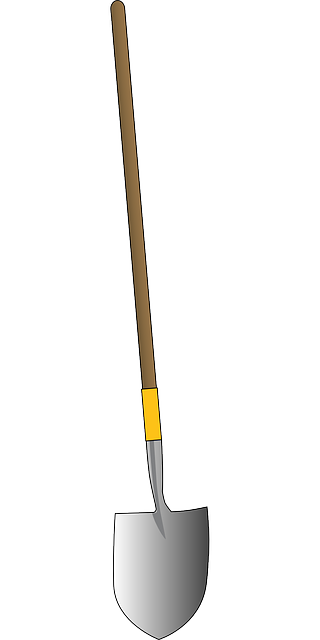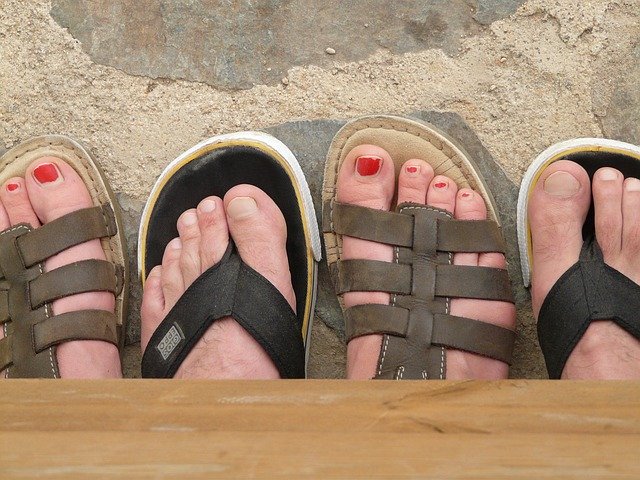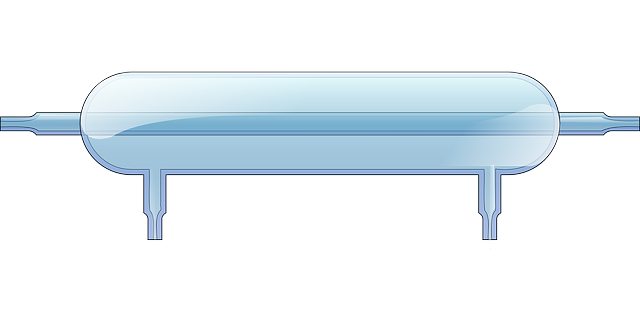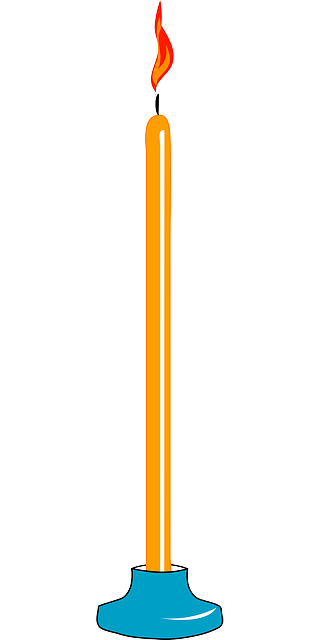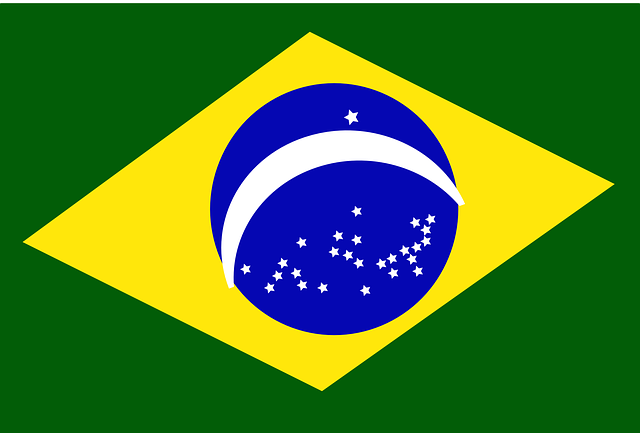احتياطي النفط الاستراتيجي (الولايات المتحدة)
The Strategic Petroleum Reserve (SPR) is an emergency fuel storage of petroleum maintained underground in Louisiana and Texas by the الولايات المتحدة Department of Energy (DOE). It is the largest emergency supply in the world, with the capacity to hold up to 727 مليون برميلs (115,600,000 م3). The United States started the petroleum reserve in 1975 after oil supplies were interrupted during the 1973–1974 oil embargo, to mitigate future supply disruptions.
The current inventory is displayed on the SPR's website. اعتبارا من 2 سبتمبر 2016[تحديث], the inventory was 695.1 مليون برميلs (110,510,000 م3). This equates to about 38 days of oil at 2013 daily U.S. consumption levels of 18.49 مليون برميل لكل يوم (2,940,000 م3/ي) or 71 days of oil at 2013 daily U.S. import levels of 9.859 مليون برميل لكل يوم (1,567,500 م3/ي). However, the maximum total withdrawal capability from the SPR is only 4.4 مليون برميل لكل يوم (700,000 م3/ي), so it would take over 158 days to use the entire inventory. At recent market prices ($69 a barrel as of December 2014), the SPR holds over $18.0 billion in sweet crude and approximately $25.5 billion in sour crude (assuming a $15/barrel discount for sulfur content). The total value of the crude in the SPR is approximately $43.5 billion. The price paid for the oil is $20.1 billion (an average of $28.42 per barrel).
Purchases of crude oil resumed in January 2009 using revenues available from the 2005 Hurricane Katrina emergency sale. The DOE purchased 10.7 مليون برميلs (1,700,000 م3) at a cost of $553 million.
Facilities
The SPR management office is located in New Orleans, Louisiana.
The reserve is stored at four sites on the Gulf of Mexico, each located near a major center of petrochemical refining and processing. Each site contains a number of artificial caverns created in salt domes below the surface.
Individual caverns within a site can be up to 1000 m below the surface, average dimensions are 60 m wide and 600 m deep, and capacity ranges fromستة to 37 مليون برميلs (950,000 to 5,880,000 م3). Almost $4 billion was spent on the facilities. The decision to store in caverns was made in order to reduce costs; the Department of Energy claims it is roughlyعشرة times cheaper to store oil below surface with the added advantages of no leaks and a constant natural churn of the oil due to a temperature gradient in the caverns. The caverns were created by drilling down and then dissolving the salt with water.
Existing
- Bryan Mound: Freeport, Texas. 20 caverns with a storage capacity of 254 مليون برميلs (40,400,000 م3) with a drawdown capacity of 1.5 مليون برميلs (240,000 م3) per day.
- Big Hill: Winnie, Texas. Has a capacity of 160 مليون برميلs (25,000,000 م3) with a drawdown capacity of 1.1 مليون برميلs (170,000 م3) per day. This facility is planned to be expanded by 250 مليون برميلs (40,000,000 م3) with a new drawdown capacity of 1.5 مليون برميلs (240,000 م3) per day.
- West Hackberry: Lake Charles, Louisiana. Has a capacity of 227 مليون برميلs (36,100,000 م3) with a drawdown capacity of 1.3 مليون برميلs (210,000 م3) per day.
- Bayou Choctaw: Baton Rouge, Louisiana. Has a capacity of 76 مليون برميلs (12,100,000 م3) with a maximum drawdown rate of 550,000 برميلs (87,000 م3) per day. This facility is planned to be expanded to 109 مليون برميلs (17,300,000 م3) with a new drawdown capacity of 600,000 برميلs (95,000 م3) per day.
Proposed
- Richton, Mississippi: This facility, if built as planned, would have had a capacity of 160 مليون برميلs (25,000,000 م3) with a drawdown capacity of 1 مليون برميل (160,000 م3) per day. Former Secretary of Energy Samuel Bodman announced the creation of this site in February 2007. As of 2008, this site was facing some opposition. According to the DOE: "Activities towards the goal of expansion of the SPR to one billion barrels, as directed by Congress in the 2005 Act, were cancelled in 2011 after Congress rescinded all remaining expansion funds."
Retired
- Weeks Island: Iberia Parish, Louisiana (decommissioned 1999): Capacity of 72 مليون برميلs (11,400,000 م3). This facility was a conventional room and pillar near-surface salt mine, formerly owned by Morton Salt. In 1993, a sinkhole formed on the site, allowing fresh water to intrude into the mine. Because of the mine's construction in salt deposits, fresh water would erode the ceiling, potentially causing the structure to fail. The mine was backfilled with salt-saturated brine. This process, which allowed for recovery of 98% of the petroleum stored in the facility, reduced the risk of further freshwater intrusion, and helped prevent the remaining oil from leaking into the aquifer that is located over the salt dome.
History
Background
Access to the reserve is determined by the conditions written into the 1975 Energy Policy and Conservation Act (EPCA), primarily to counter a severe supply interruption. The maximum removal rate, by physical constraints, is 4.4 مليون برميل لكل يوم (700,000 م3/ي). Oil could begin entering the marketplace 13 days after a presidential order. The Department of Energy says it has about 59 days of import protection in the SPR. This, combined with private sector inventory protection, is estimated to equal 115 days of imports.
The SPR was created following the 1973 energy crisis. The EPCA of December 22, 1975, made it policy for the United States to establish a reserve up to 1 billion barrels (159 million m³) of petroleum. A number of existing storage sites were acquired in 1977. Construction of the first surface facilities began in June 1977. On July 21, 1977, the first oil—approximately 412,000 برميلs (65,500 م3) of Saudi Arabian light crude—was delivered to the SPR. Fill was suspended in Fiscal Year 1995 to devote budget resources to refurbishing the SPR equipment and extending the life of the complex. The current SPR sites are expected to be usable until around 2025. Fill was resumed in 1999.
Repletion and suspension
On November 13, 2001, shortly after the September 11 terrorist attacks, President George W. Bush announced that the SPR would be filled, saying, "The Strategic Petroleum Reserve is an important element of our Nation's energy security. To maximize long-term protection against oil supply disruptions, I am directing the Secretary of Energy to fill the SPR up to its 700 مليون برميلs (110,000,000 م3) capacity." The highest prior level was reached in 1994 with 592 مليون برميلs (94,100,000 م3). At the time of President Bush's directive, the SPR contained about 545 مليون برميلs (86,600,000 م3). Since the directive in 2001, the capacity of the SPR increased by 27 مليون برميلs (4,300,000 م3) due to natural enlargement of the salt caverns in which the reserves are stored. The Energy Policy Act of 2005 has since directed the Secretary of Energy to fill the SPR to the full 1 بليون برميل (160,000,000 م3) authorized capacity, a process which will require a physical expansion of the Reserve's facilities.
On August 17, 2005, the SPR reached its goal of 700 مليون برميلs (110,000,000 م3), or about 96% of its now-increased 727 مليون برميلs (115,600,000 م3) capacity. Approximately 60% of the crude oil in the reserve is the less desirable sour (high sulfur content) variety. The oil delivered to the reserve is "royalty-in-kind" oil—royalties owed to the U.S. government by operators who acquire leases on the federally owned Outer Continental Shelf in the Gulf of Mexico. These royalties were previously collected as cash, but in 1998 the government began testing the effectiveness of collecting royalties "in kind"—or in other words, acquiring the crude oil itself. This mechanism was adopted when refilling the SPR began, and once filling is completed, revenues from the sale of future royalties will be paid into the federal treasury.
On April 25, 2006, President Bush announced a temporary halt to petroleum deposits to the SPR as part of a four-point program to alleviate high fuel prices.[]
On January 23, 2007, President Bush suggested in his State of the Union speech that Congress should approve expansion of the current reserve capacity to twice its current level.
On May 16, 2008, the U.S. Department of Energy (DOE) said it would halt all deliveries to the Strategic Petroleum Reserve sometime in July. This announcement came days after Congress voted to direct the Bush administration to do the same.
On January 2, 2009, after a sharp decline in fuel prices, DOE said that it would begin buying approximately 12,000,000 برميلs (1,900,000 م3) of crude oil to fill the Strategic Petroleum Reserve, replenishing supplies that were sold after hurricanes Katrina and Rita in 2005. The purchase would be funded by the roughly $600 million received from those emergency sales.
On September 9, 2011, a Notice of Cancellation was published in the Federal Register after Congress rescinded funding for the expansion of the Strategic Petroleum Reserve, reversing the SPR expansion initiative previously directed under the Energy Policy Act of 2005.
On October 20, 2014, a report by the U.S. Government Accountability Office (GAO) recommended reducing the size of the Reserve. According to the report, the amount of oil held in reserve exceeds the amount required to be kept on hand given the need for imported crude oil had decreased in recent years. The report said DOE agreed with the GAO recommendation.
Emergency sales to Israel
According to the 1975 Sinai Interim Agreement signed by the United States and Israel, as a precondition for Israel's return of the Sinai Peninsula and its associated oil reserves to Egypt, in an emergency the United States was obligated to make oil available for sale to Israel for up to five years. Israel has never used the agreement, however. The agreement was updated in 1979, 1994, 2004, and, most recently, in 2015 for a ten-year period.
International obligations
As a member of the International Energy Agency (IEA), the United States must stock an amount of petroleum equivalent to at least 90 days of U.S. imports. The SPR contained an equivalent to 141 days of imports as of September 2016. The United States is also obligated to contribute 43.9% of petroleum in any IEA-coordinated release.
Limitations
The Strategic Petroleum Reserve is primarily a crude petroleum reserve, not a stockpile of refined petroleum fuels such as gasoline, diesel and kerosene. Although the United States maintains some extra supply of refined petroleum fuels, e.g., the Northeast Home Heating Oil Reserve and Northeast Gasoline Supply Reserve under the aegis of the Department of Energy (DOE), the government does not maintain gasoline reserves on anything like the scale of the SPR. The SPR is intended to give the United States protection from disruptions in oil supplies. In the event of a major disruption to refinery operations, the United States would have to call on members of the International Energy Agency that stockpile refined products, and use refining capacities outside of the continental United States for relief.
There have been suggestions that the DOE should increase its supplies and stockpile both gasoline and jet fuel. Some countries and zones have a strategic reserve of both petroleum and petroleum products. In some cases, this includes a strategic reserve of jet fuel.[]
Former Secretary of Energy Samuel Bodman said that the Department would consider new facilities for refined products as part of an expansion of 1 to 1.5 بليون برميلs (160,000,000 to 240,000,000 م3).[]
Drawdowns
Petroleum sales
- 1985: Test sale - 1.1 مليون برميلs (170,000 م3)
- 1990–1991: Desert Storm sale - 21 مليون برميلs (3,300,000 م3)
- 4 مليون برميلs (640,000 م3) in August 1990 test sale
- 17 مليون برميلs (2,700,000 م3) in January 1991 presidentially ordered drawdown
- 1996–1997: 28 مليون برميلs (4,500,000 م3) non-emergency sales for deficit reduction
- July–August 2000: 2.8 مليون برميلs (450,000 م3) to supply the Northeast Home Heating Oil Reserve.
- September–October 2000: 30 مليون برميلs (4,800,000 م3) in response to a concern over low distillate levels in the northeastern U.S.
- 2005 Hurricane Katrina sale: 11 مليون برميلs (1,700,000 م3) - Katrina shut down 95% of crude production and 88% of natural gas output in the Gulf of Mexico. This amounted to a quarter of total U.S. output. About 735 oil and natural gas rigs and platforms had been evacuated due to the hurricane.
- 2011 Arab Spring sale: 30 مليون برميلs (4,800,000 م3) - non-emergency sale to offset disruptions caused by political upheaval in Libya and elsewhere in the Middle East. The amount was matched by IEA countries, for a total of 60 مليون برميلs (9,500,000 م3) released from stockpiles around the world.
- In December 2016, the DOE announced it would begin the sale of 190 مليون برميلs (30,000,000 م3) in January 2017.
Petroleum exchanges and loans
Note: Loans are made on a case-by-case basis to alleviate supply disruptions. Once conditions return to normal, the loan is returned to the SPR with additional oil as interest.
- April–May 1996: 900,000 برميلs (140,000 م3) lent to ARCO to alleviate pipeline blockage.
- August 1998: 11 مليون برميلs (1,700,000 م3) lent to PEMEX in return for 8.5 مليون برميلs (1,350,000 م3) of higher-quality crude.
- June 2000: 1 مليون برميل (160,000 م3) lent to Citgo and Conoco in response to shipping channel blockage.
- October 2002: 296,000 برميلs (47,100 م3) lent to Shell Pipeline Company in advance of Hurricane Lili.
- September–October 2004: 5.4 مليون برميلs (860,000 م3) lent to Astra Oil, ConocoPhillips, Placid Refining, Shell Oil Company, and Premcor after Hurricane Ivan.
- September–October 2005: 9.8 مليون برميلs (1,560,000 م3) lent to ExxonMobil, Placid Refining, Valero, BP, Marathon Oil, and Total S.A. after Hurricane Katrina.
- January–February 2006: 767,000 برميلs (121,900 م3) lent to Total Petrochemicals USA due to closure of the Sabine–Neches Waterway to deep-draft vessels after a barge accident in the channel.
- June 2006: 750,000 برميلs (119,000 م3) of sour crude lent to ConocoPhillips and Citgo due to the closure for several days of the Calcasieu Ship Channel caused by the release of a mixture of storm water and oil. Repaid in early October 2006.
- September 2008: 630,000 برميلs (100,000 م3) lent to Citgo, Placid Refining, and Marathon Oil due to disruptions from Hurricane Gustav.
- August 2017: 200,000 barrels of sweet crude and 300,000 barrels of sour crude were lent to Phillips 66 due to disruptions from Hurricane Harvey.
المراجع
- ^ "Office of Petroleum Reserves". US Department of Energy. Retrieved August 27, 2015.
- ^ "Strategic Petroleum Reserve Inventory". Retrieved March 3, 2015.
- ^ US Total Petroleum Consumption, US Energy Information Administration.
- ^ US Total Crude Oil and Products Imports, U.S. Energy Information Administration.
- ^ WTI & Brent Crude Oil Prices
- ^ "Strategic Petroleum Reserve - Quick Facts and Frequently Asked Questions". US Department of Energy. Retrieved February 25, 2012.
- ^ Strategic Petroleum Reserve – Profile, February 27, 2013. Archived April 8, 2013.
- ^ Clanton, Brett (May 27, 2008). "Go past guards for tour of U.S. oil reserve in Freeport". Houston Chronicle. Retrieved February 25, 2012.
- ^ "Strategic Petroleum Reserve Plan: Expansion to One Billion Barrels" (Page 5), US Department of Energy, June 2007.
- ^ "DOE Takes Next Steps to Expand Strategic Petroleum Reserve to One Billion Barrels". US Department of Energy. December 8, 2006. Retrieved February 25, 2012.
- ^ "Oil reserve site raises ire, Bush policy tested", Reuters. Retrieved June 21, 2016.
- ^ "SPR Quick Facts and FAQs". US Department of Energy. Retrieved December 24, 2014.
- ^ "President Orders Strategic Petroleum Reserve Filled". White House Office of the Press Secretary. November 13, 2001. Retrieved December 26, 2014.
- ^ Bush, George W. (January 23, 2007). "President Bush's 2007 State of the Union Address". The Washington Post. Retrieved January 24, 2007.
- ^ "DOE Stops Filling the Strategic Petroleum Reserve". US Department of Energy. May 21, 2008. Retrieved February 25, 2012.
- ^ Berthelsen, Christian (October 20, 2014). "U.S. Oil Exports Would Lower Gas Prices, Government Report Says". Wall Street Journal. Retrieved October 20, 2014.
- ^ Phillips, James (February 28, 1979). "The Iranian Oil Crisis". The Heritage Foundation. Retrieved February 25, 2012.
- ^ "US and Israel Sign Extension of Oil Supply Agreement". Israel National News. April 17, 2015. Retrieved June 21, 2016.
- ^ "This Week in Petroleum". US Dept of Energy. December 21, 2016. Retrieved December 21, 2016.
- ^ Tejerina, Pilar (September 30, 2005). "Senators propose gasoline reserve". CNN. Retrieved January 24, 2007.
- ^ Smith, Aaron (June 23, 2011). "U.S. to release oil from strategic reserve". CNN.
- ^ "Quick Facts about the Strategic Petroleum Reserve". US Department of Energy. Retrieved February 25, 2012.
- ^ "Oil ends up after dip below $100". CNN. 12 September 2008.
- ^ "US taps strategic oil reserves". The Mercury News. August 31, 2017. Retrieved August 31, 2017.
وصلات خارجية
| مشاع الفهم فيه ميديا متعلقة بموضوع [[commons:خطأ لوا في وحدة:WikidataIB على السطر 496: attempt to index field 'wikibase' (a nil value).|خطأ لوا في وحدة:WikidataIB على السطر 496: attempt to index field 'wikibase' (a nil value).]]. |
- Strategic Petroleum Reserve, U.S. Department of Energy (official website)
- The Strategic Petroleum Reserve: Quick facts and FAQ, U.S. Department of Energy



